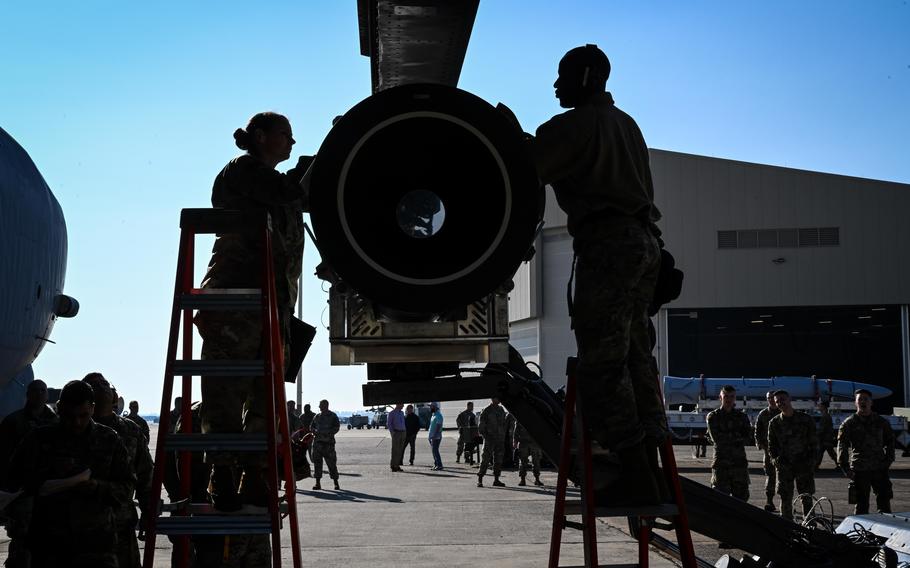
Air Force Master Sgt. Marcella Philips, 2nd Maintenance Group weapons standardization loading standardization crew chief, and Tech Sgt. Darrell Stewart, 307th Aircraft Maintenance Squadron loading standardization crew member, secure the Air-Launched Rapid Response Weapon to the B-52H Stratofortress ejector rack at Barksdale Air Force Base, La., on Nov. 2, 2022. The ARRW is the first Air Force hypersonic weapon and is scheduled to be operational in the fall of 2023. (Nicole Ledbetter/U.S. Air Force)
WASHINGTON — The Air Force on Monday carried out the first live-fire test of its first hypersonic weapon, which can travel at least five times the speed of sound, according to service officials.
The Air Force and contractor Lockheed Martin have been developing the AGM-183A air-to-ground missile system — better known as the ARRW — since 2018.
“The ARRW team successfully designed and tested an air-launched hypersonic missile in five years,” said Brig. Gen. Jason Bartolomei, the program executive officer for weapons and director of the Armament Directorate.
The “all-up-round” test was done off the coast of Southern California, and it appears “all objectives were met,” the Air Force said. An all-up-round test is one that evaluates the weapon in its fully assembled condition. The end-to-end test succeeded when the live warhead struck and detonated in a previously designated area in the Pacific.
Last week, the Air Force cleared the initial hurdle in this late-stage testing process — loading the system onto a B-52 bomber and taking it back off. Making that step allowed the Air Force to move on to live-fire testing. Lockheed has said the ARRW should become operational within a year.
The live-fire test marked the first launch of a full prototype operational ARRW missile, Air Force officials said. Tests earlier this year focused on evaluating the booster — a rocket-powered vehicle that carries the warhead to hypersonic speeds before releasing it to strike a target.
“With this test, we are on the cusp of an operational capability that can be deployed to the men and women in uniform,” Lockheed Vice President of Air Dominance and Strike Weapons Jay Pitman said in a statement.
The Pentagon has been focused on adding modern hypersonic components for years, particularly when it became known that military competitors such as Russia and China were also racing toward the technology. Claims by Moscow that Russian forces have already used a hypersonic missile in Ukraine this year have not been confirmed by U.S. defense or intelligence officials.